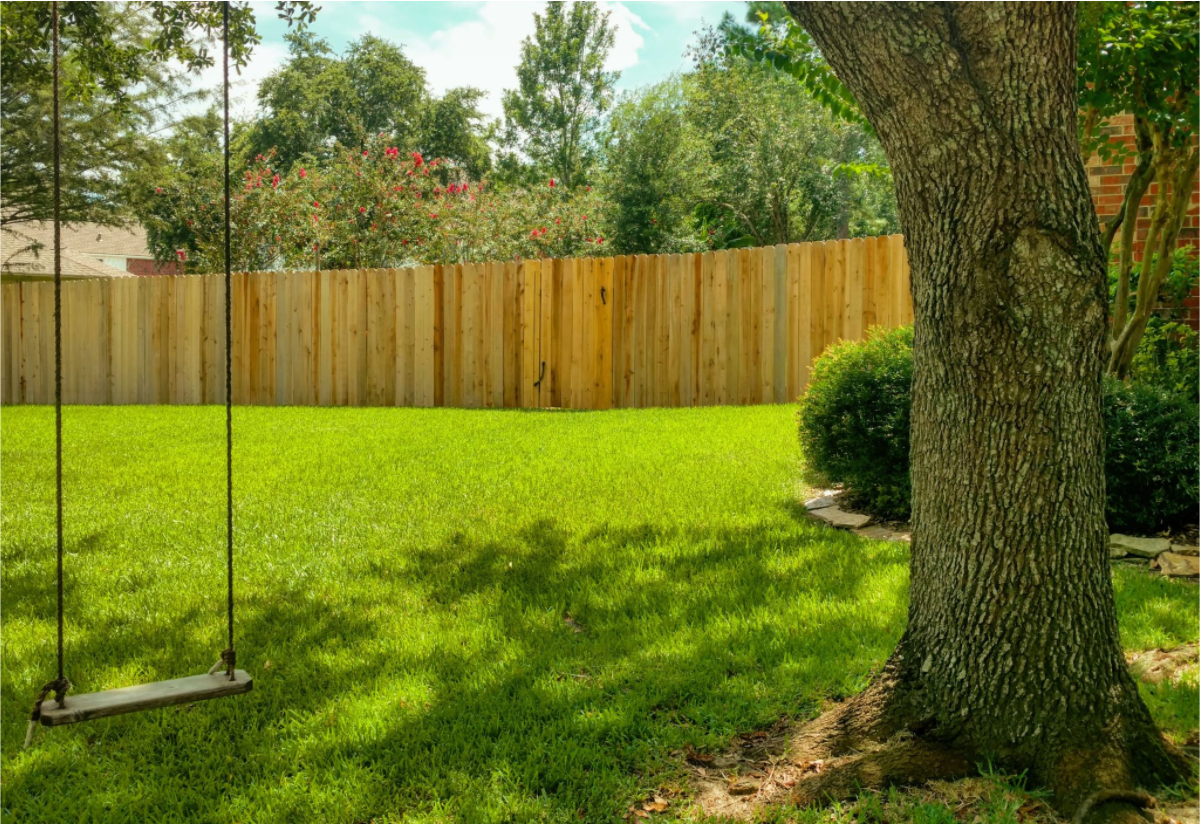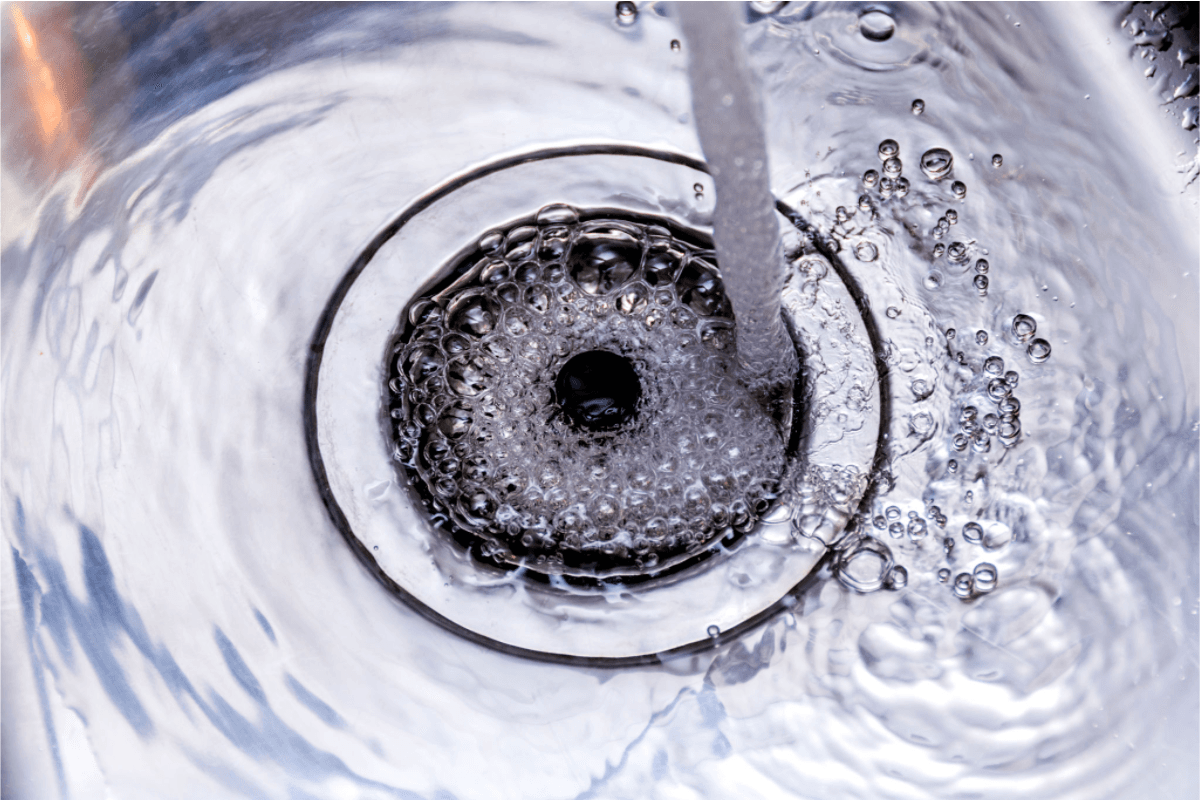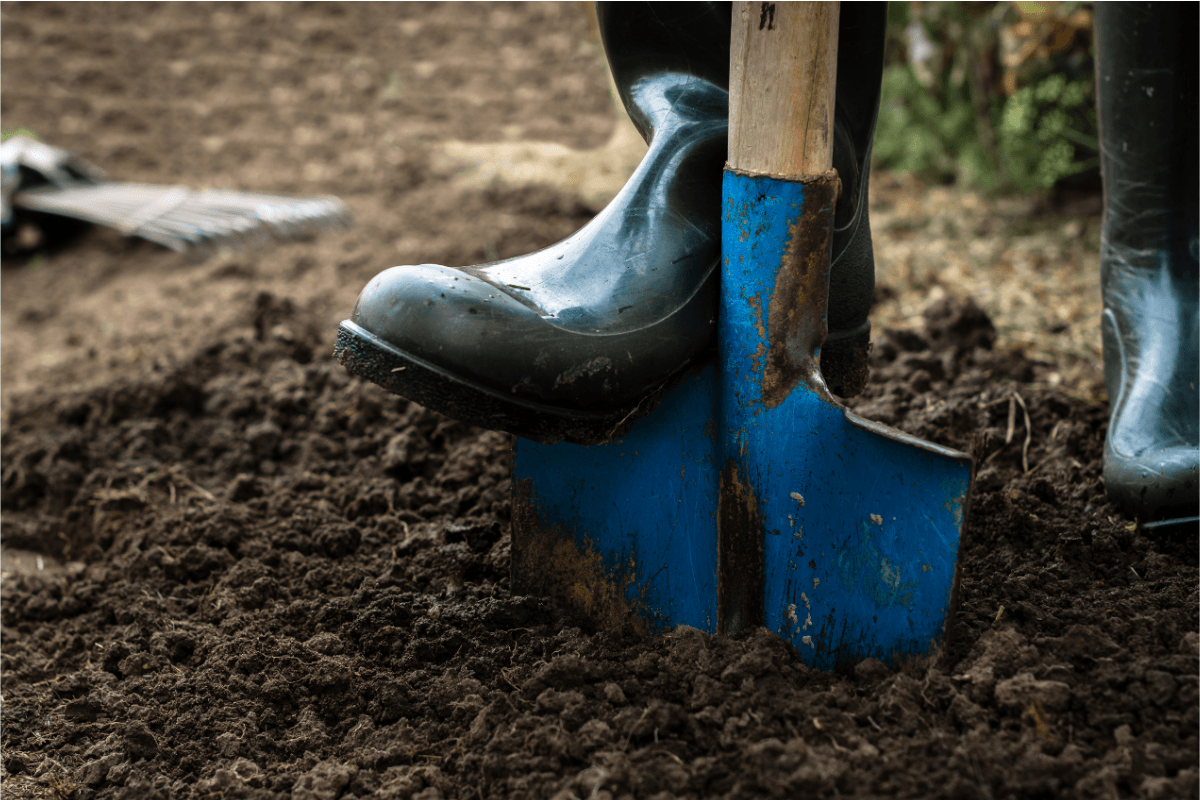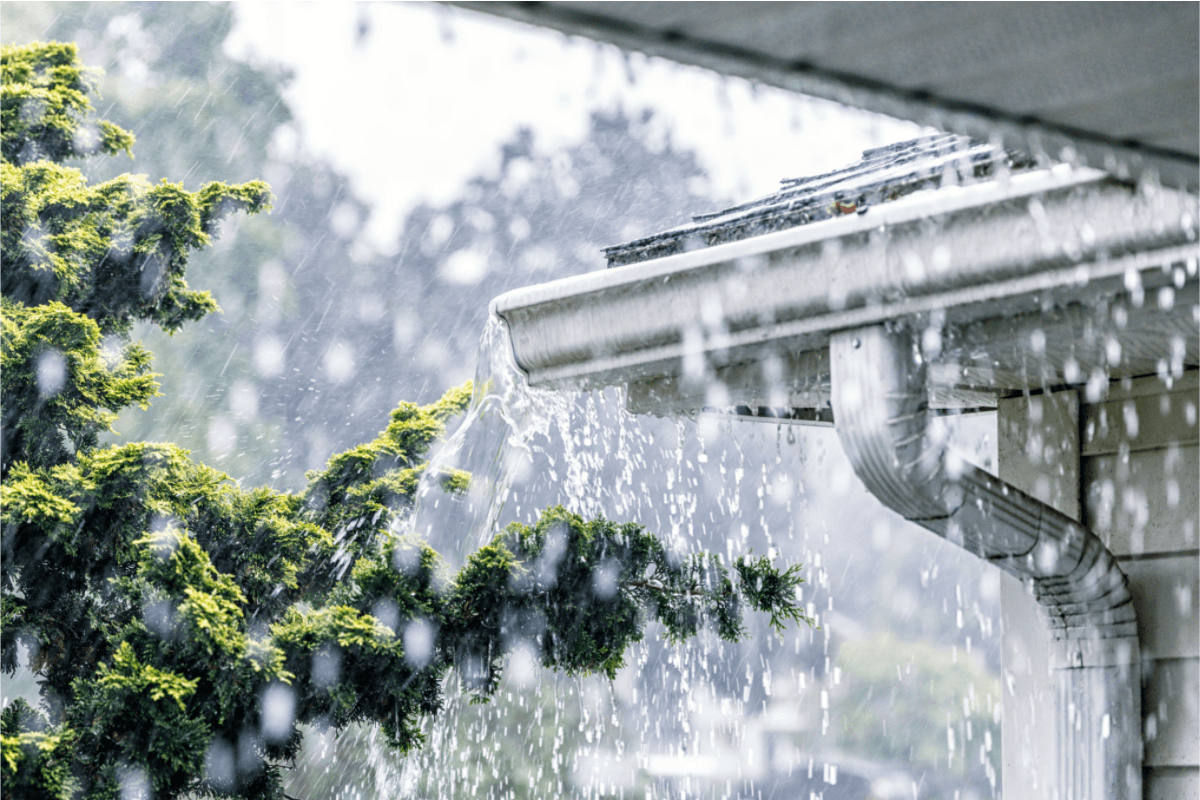Sewer line issues can be a homeowner’s nightmare. Not only can they result in messy backups and costly repairs, but they can also disrupt your daily life. Understanding the common causes of sewer line problems is the first step in preventing them and ensuring your plumbing system functions smoothly.
At Service by Scott, a family-owned and operated full-service plumbing and maintenance company with over 30 years of experience, we’ve seen it all when it comes to sewer line issues. In this article, we’ll walk you through the top culprits behind these problems and provide you with expert insights on how to address and prevent them.
From the invasion of tree roots to the corrosion of aging pipelines, we’ll delve into the various factors that can compromise the integrity of your sewer lines. Whether you’re a homeowner looking to safeguard your property or a business owner in need of commercial plumbing expertise, understanding these common causes is essential. By the end of this article, you’ll be well-equipped to protect your sewer lines and keep your plumbing running smoothly. Let’s dive in and explore the world beneath your property, where sewer line issues often begin.

Tree Roots Intrusion
The tranquil and picturesque presence of trees in your yard can often belie a hidden menace beneath the surface. The intrusion of tree roots into your sewer lines is a common cause of plumbing problems. As roots seek out moisture and nutrients, they can infiltrate your pipes, leading to blockages and damage. Understanding how tree roots damage sewer lines, recognizing the warning signs, and implementing preventative measures can save you from a plumbing disaster.
How Tree Roots Damage Sewer Lines
Tree roots are naturally drawn to the moisture inside sewer pipes. Even the smallest cracks or joints in your sewer line can become entry points for these roots. Once inside, the roots grow and expand, causing obstructions and potentially leading to pipe damage. Over time, these roots can constrict the flow of wastewater, causing blockages that can result in slow drains, gurgling sounds, or even sewage backups in your home.
Signs of Tree Root Intrusion
If you suspect tree roots might be infiltrating your sewer lines, watch for signs such as slow-draining sinks or toilets, gurgling noises coming from your plumbing system, or recurring sewage backups. These symptoms can be indicative of root obstruction, and addressing the issue promptly is crucial to prevent more severe damage.
Prevention and Maintenance Tips
Preventing tree root intrusion involves regular maintenance and strategic planting. To protect your sewer lines, consider scheduling routine inspections and root removal. Modern techniques, such as trenchless pipe repair, can help resolve the issue without extensive excavation. Additionally, choose tree species with less invasive root systems when landscaping near your sewer lines.
Tree root intrusion can be a tricky issue to handle, but with proactive maintenance and preventative measures, you can mitigate the damage and keep your sewer lines clear and functional. In the next section, we’ll explore another common cause of sewer line problems: aging pipelines.
Aging Pipelines
Over time, even the most durable materials can show signs of wear and tear, and your sewer lines are no exception. Aging pipelines can be a significant cause of sewer line issues, often leading to costly repairs and disruptions. In this section, we’ll explore how aging pipes contribute to these problems, signs that your pipelines may be deteriorating, and the available repair and replacement options.
How Aging Pipes Contribute to Sewer Line Problems
Sewer lines are typically constructed using materials like cast iron, clay, or concrete. While these materials are durable, they are not immune to the effects of time. As pipelines age, they become more susceptible to corrosion, cracks, and joint displacement. The resulting issues can range from minor leaks to complete sewer line collapses, causing significant damage to your property.
Signs of Deteriorating Pipelines
Recognizing the signs of aging pipelines is crucial in addressing potential issues before they escalate. Common indicators include persistent clogs, slow drains, unpleasant odors, or unusual sounds emanating from your plumbing system. Additionally, wet patches in your yard or basement and sewage backups are clear signals that your sewer lines may need attention.
Repair and Replacement Options
When dealing with aging pipelines, you have several options. Traditional repair methods involve excavating and replacing damaged sections of the pipe. However, this can be disruptive and costly. Alternatively, trenchless technologies, such as pipe lining and pipe bursting, offer less invasive approaches to repairing or replacing sewer lines, often saving you time and money.
As we’ve explored, aging pipelines are a common factor behind sewer line issues. In the next section, we’ll delve into another critical aspect: clogs and blockages, which can affect sewer lines of all ages and materials.

Clogs and Blockages
Sewer line clogs and blockages are plumbing problems that can affect homeowners and businesses alike, regardless of the age or material of the pipelines. These issues can lead to slow drains, backups, and other inconveniences. In this section, we’ll delve into the common causes of sewer line clogs, the symptoms that indicate a clog, and the range of do-it-yourself and professional solutions available to address this prevalent issue.
Causes of Sewer Line Clogs
Sewer line clogs can occur due to a variety of reasons. Common culprits include the accumulation of debris like hair, soap scum, and grease, as well as foreign objects accidentally flushed down the drain. Additionally, invasive tree roots can infiltrate your sewer lines, causing blockages over time. Identifying the underlying cause is essential for effective clog removal.
Symptoms of Clogs in Your Sewer Line
Recognizing the signs of a sewer line clog is the first step in addressing the issue promptly. If you notice slow drainage in multiple fixtures, gurgling sounds coming from your plumbing, or sewage backups in your drains or toilets, it’s likely you have a clog. Ignoring these symptoms can lead to more severe damage, so taking action is crucial.
DIY and Professional Solutions
Depending on the severity of the clog and the cause, you have several options for addressing sewer line blockages. For minor clogs caused by accumulated debris, DIY methods like using a plunger or a drain snake may suffice. However, for more stubborn or extensive clogs, it’s advisable to seek professional help.
Professional plumbers can employ advanced tools and techniques, such as hydro jetting, to clear stubborn clogs and ensure your sewer lines are free from obstructions. They can also inspect the sewer line to identify any underlying issues that might be contributing to the clog, such as tree root intrusion or deteriorating pipes.
In the next section, we will explore the impact of corrosion on sewer lines and provide insights into how it can be detected and prevented, offering valuable guidance to help you maintain a well-functioning plumbing system.
Corrosion
Corrosion, the gradual deterioration of metal surfaces, is a silent but significant threat to your sewer lines. This issue can affect pipes of various materials, including iron and steel, leading to leaks, structural damage, and potentially costly repairs. In this section, we’ll examine the impact of corrosion on sewer lines, signs that suggest your pipes may be corroding, and strategies to detect and prevent this common issue.
The Impact of Corrosion on Sewer Lines
Corrosion occurs when the metal components of your sewer lines react with the surrounding environment. This chemical process can lead to the weakening of the pipes, causing leaks and compromising the structural integrity of the sewer system. Corrosion can be accelerated by factors such as high levels of moisture, soil composition, and the pH of the wastewater inside the pipes.
Detecting Corrosion in Pipes
Identifying corrosion in your sewer lines may not always be straightforward, as it typically occurs inside the pipes. However, certain symptoms can indicate corrosion-related issues, including low water pressure, discolored or metallic-tasting water, and visible rust on exposed pipes. Additionally, if you notice repeated leaks or damage to your sewer lines, corrosion could be the underlying cause.
Preventing Corrosion with Routine Maintenance
Preventing corrosion in your sewer lines involves regular inspections and proactive measures. Coating pipes with corrosion-resistant materials, such as epoxy or plastic, can offer protection. Proper drainage and moisture control around the pipes are also essential for reducing the risk of corrosion. Regular maintenance by a professional plumber can help detect corrosion early and address it before extensive damage occurs.
Understanding the impact of corrosion on your sewer lines is crucial for maintaining the integrity of your plumbing system. In the next section, we’ll delve into how shifting soil can pose a threat to your sewer lines and provide insights into how to address this specific issue.

Shifting Soil
The ground beneath your property isn’t as static as it may seem. Shifting soil, a common phenomenon influenced by factors such as weather changes, erosion, and land development, can have a significant impact on your sewer lines. In this section, we’ll explore how shifting soil can damage your sewer lines, signs that indicate soil-related issues, and methods to stabilize the soil and repair your plumbing system.
How Soil Movement Can Damage Sewer Lines
The soil surrounding your sewer lines plays a vital role in their stability. When the ground shifts, it can cause your sewer lines to move, leading to misalignment, cracks, or even fractures. Additionally, the shifting soil can exert pressure on the pipes, which may result in dislocation or deformation. Understanding how soil movement affects your sewer lines is crucial for preventing and addressing potential issues.
Signs of Soil-Related Issues
Identifying the symptoms of soil-related problems can help you take timely action. Look out for signs such as sudden dips or elevations in your yard, visible cracks in the ground above your sewer lines, and recurring blockages or leaks. Unusual noises or slow drainage in your plumbing system may also indicate soil movement affecting your sewer lines.
Soil Stabilization and Repair Methods
Addressing sewer line issues caused by shifting soil requires stabilizing the ground and repairing any damage. Soil stabilization techniques, such as soil grouting or compaction, can prevent further movement and protect your sewer lines. If the soil movement has resulted in damage, trenchless pipe repair methods can be a minimally invasive solution. These techniques, like pipe lining or bursting, can correct misalignments and restore the functionality of your sewer lines.
Understanding the role of shifting soil in sewer line issues is essential for proactive maintenance and prompt repairs. In the next section, we will explore the risk of foreign objects and debris causing blockages in your sewer lines and provide insights into how to prevent these common obstructions.
Foreign Objects and Debris in Sewer Lines
Sewer line blockages don’t always occur due to natural factors or structural issues; sometimes, it’s the everyday items that find their way into your plumbing system. Foreign objects and debris, such as hygiene products, paper towels, grease, and toys, can wreak havoc on your sewer lines. In this section, we’ll delve into the risk of foreign objects causing blockages, how to identify and remove these obstructions, and tips to prevent these common and disruptive issues.
The Risk of Foreign Objects in Sewer Lines
Foreign objects and debris can easily find their way into your sewer lines through toilets and drains. Items like cotton swabs, sanitary products, dental floss, and paper towels can accumulate and form clogs, causing slow drains, backups, and potential pipe damage. Additionally, grease and cooking oil poured down drains can solidify within the pipes, compounding the problem.
Identifying and Removing Obstructions
Recognizing and addressing sewer line obstructions caused by foreign objects is essential to prevent further damage. If you notice slow drainage, gurgling sounds, or sewage backups, it’s crucial to act promptly. Professional plumbers have specialized tools and techniques, such as drain snakes and hydro jetting, to safely and effectively remove blockages, restoring your plumbing system’s functionality.
Tips for Avoiding Sewer Line Blockages
Preventing sewer line blockages due to foreign objects and debris involves a combination of proper disposal practices and proactive maintenance. Educate household members about what should not be flushed or poured down drains. Installing drain traps can capture debris before it enters your sewer lines. Regular inspections by a professional can help identify and address any potential blockages before they become severe.
Understanding the risk posed by foreign objects and debris in your sewer lines can help you take proactive measures to prevent these common issues. In the next section, we will explore the impact of extreme weather conditions on sewer lines and guide in preparing for and recovering from weather-related damage.

Extreme Weather Conditions
As unpredictable as Mother Nature can be, extreme weather conditions can pose a significant threat to your sewer lines. Whether it’s torrential rain, freezing temperatures, or drought, the effects of weather can be felt below the surface. In this section, we’ll explore how weather extremes affect sewer lines, provide tips on preparing for and recovering from weather-related damage, and share insights on how to protect your sewer lines in harsh environmental conditions.
How Weather Extremes Affect Sewer Lines
Extreme weather conditions can impact your sewer lines in various ways. Heavy rain and flooding can overwhelm the system, leading to backups and blockages. Freezing temperatures can cause pipes to burst, while prolonged drought can cause soil to shift and affect pipe alignment. Understanding these potential threats is essential for protecting your plumbing system.
Preparing for Extreme Weather
To safeguard your sewer lines against extreme weather, it’s essential to prepare in advance. Ensure your yard is properly graded to prevent flooding and soil erosion. Insulate exposed pipes to protect them from freezing temperatures. Consider the installation of a sump pump to prevent water from entering your basement during heavy rains.
Recovering from Weather-Related Damage
In the unfortunate event of weather-related damage to your sewer lines, it’s crucial to address the issue promptly. Seek professional plumbing assistance to assess and repair any damage. Additionally, it’s advisable to contact your insurance provider to understand what coverage is available for weather-related sewer line issues.
Protecting Your Sewer Line in Harsh Conditions
Preventing damage during extreme weather conditions often comes down to proactive measures. Routine inspections and maintenance can help identify vulnerabilities and address them before they become severe. By maintaining a well-functioning sewer system and taking steps to safeguard it against extreme weather, you can minimize the risk of costly and disruptive issues.
In the next section, we’ll explore the critical issue of foreign objects and debris that can accumulate in your sewer lines, causing blockages and disruptions. We’ll provide practical tips for avoiding these common obstructions and keeping your plumbing system running smoothly.
Maintenance and Prevention Tips
Maintaining the integrity of your sewer lines is a proactive approach that can save you from the inconvenience and expense of plumbing issues. At Service by Scott, we understand the importance of keeping your sewer lines in top condition. In this section, we’ll share maintenance and prevention tips that not only extend the lifespan of your sewer lines but also highlight how our expertise can play a crucial role in ensuring a trouble-free plumbing system.
Regular Inspections and Maintenance
One of the most effective ways to safeguard your sewer lines is to schedule regular inspections by our professional team at Service by Scott. With over 30 years of experience, our plumbing experts can identify potential problems before they escalate. From detecting root intrusion to addressing corrosion and deterioration, our thorough inspections offer peace of mind and can save you time and money in the long run.
Extending the Lifespan of Your Sewer Line
Our commitment to providing the best service extends to helping you extend the lifespan of your sewer lines. Avoid disposing of harmful items down your drains or toilets, such as grease, hygiene products, or excessive toilet paper. By using drain traps to capture debris and prevent blockages, you can maintain a plumbing system that’s less likely to experience costly issues.
DIY Tips for Keeping Sewer Lines Clear
While we’re always ready to assist, there are do-it-yourself methods you can employ to help keep your sewer lines clear between professional visits. Regularly flushing hot water down your drains can help prevent grease buildup. Applying chemical drain cleaners, with caution, can break down obstructions before they become major problems.
At Service by Scott, we believe that preventive maintenance is key to a smoothly running plumbing system. By adopting these maintenance and prevention tips, you become an active partner in the health of your sewer lines, ensuring cost-effectiveness and uninterrupted plumbing performance. In the final section of this article, we’ll emphasize the value of professional plumbing services and explain how Service by Scott is the trusted name you can rely on for all your sewer line needs.
Conclusion
In the world of plumbing, knowledge is your greatest ally. Understanding the common causes of sewer line issues and how to prevent them can save you from unexpected disruptions and costly repairs. From invasive tree roots to shifting soil, corrosion, and foreign objects, the threats to your sewer lines are many, but so are the solutions.
At Service by Scott, we’ve been serving the plumbing needs of Woodville, Texas, and its neighbors for over 30 years. Our family-owned and operated business is fully licensed and committed to keeping your plumbing flowing smoothly. With a focus on expertise and reliability, we’ve walked you through the key factors that can affect your sewer lines and provided valuable insights to help you maintain a trouble-free plumbing system.
Remember, regular inspections, proactive maintenance, and expert plumbing services can make all the difference in the world. By taking an active role in protecting your sewer lines and partnering with Service by Scott, you can enjoy the peace of mind that comes with a well-maintained plumbing system.
Don’t wait until the next plumbing emergency strikes. Whether you need an inspection, maintenance, or emergency services, contact Service by Scott today. Your plumbing deserves the best, and we’re here to provide it. Let us be your trusted partner in keeping your sewer lines in pristine condition.
FAQs
What are the typical signs of a sewer line problem?
Common signs of sewer line issues include slow drains, gurgling sounds from drains and toilets, recurring sewage backups, foul odors in your home or yard, and wet patches in your lawn or basement. If you notice any of these symptoms, it’s essential to seek professional plumbing assistance.
Can tree roots damage sewer lines, and can I prevent it?
Yes, tree roots can infiltrate and damage sewer lines. To prevent tree root intrusion, consider planting trees with less invasive root systems away from sewer lines. Additionally, regular inspections and root removal can help identify and address root-related issues before they become severe.
Is it possible to repair or replace a sewer line without digging up my yard?
Yes, trenchless technologies like pipe lining and pipe bursting offer minimally invasive options for repairing or replacing sewer lines. These methods can save you from extensive excavation and minimize disruption to your property.
What steps can I take to prevent common sewer line issues?
Preventing sewer line issues involves regular inspections, proactive maintenance, and responsible practices. Avoid flushing or pouring grease, hygiene products, or excessive toilet paper down drains. Use drain traps to capture debris, and consider soil stabilization to prevent soil movement affecting your sewer lines.
How often should I schedule sewer line inspections and maintenance?
Regular inspections are recommended at least once a year, as preventive measures can help detect and address potential issues early. Maintenance frequency may vary depending on factors like the age and condition of your sewer lines. Contact a professional plumber, like Service by Scott, to discuss a maintenance schedule tailored to your specific needs.

